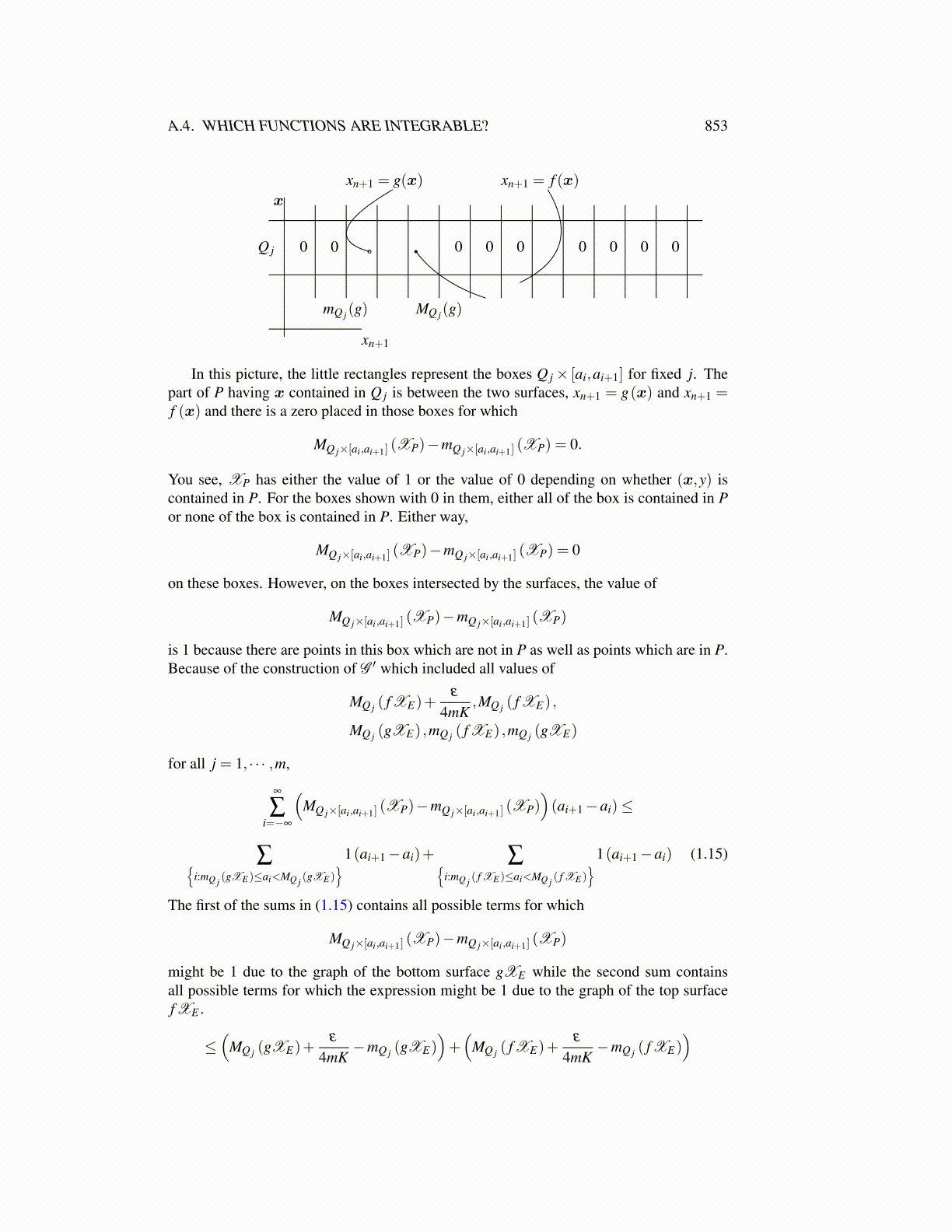
A.4. WHICH FUNCTIONS ARE INTEGRABLE? 853
MQ j(g)mQ j(g)
Q j
xn+1
x
xn+1 = g(x) xn+1 = f (x)
0 0 0 0 0 0 0 0 0
In this picture, the little rectangles represent the boxes Q j× [ai,ai+1] for fixed j. Thepart of P having x contained in Q j is between the two surfaces, xn+1 = g(x) and xn+1 =f (x) and there is a zero placed in those boxes for which
MQ j×[ai,ai+1] (XP)−mQ j×[ai,ai+1] (XP) = 0.
You see, XP has either the value of 1 or the value of 0 depending on whether (x,y) iscontained in P. For the boxes shown with 0 in them, either all of the box is contained in Por none of the box is contained in P. Either way,
MQ j×[ai,ai+1] (XP)−mQ j×[ai,ai+1] (XP) = 0
on these boxes. However, on the boxes intersected by the surfaces, the value of
MQ j×[ai,ai+1] (XP)−mQ j×[ai,ai+1] (XP)
is 1 because there are points in this box which are not in P as well as points which are in P.Because of the construction of G ′ which included all values of
MQ j ( f XE)+ε
4mK,MQ j ( f XE) ,
MQ j (gXE) ,mQ j ( f XE) ,mQ j (gXE)
for all j = 1, · · · ,m,
∞
∑i=−∞
(MQ j×[ai,ai+1] (XP)−mQ j×[ai,ai+1] (XP)
)(ai+1−ai)≤
∑{i:mQ j (gXE )≤ai<MQ j (gXE )
}1(ai+1−ai)+ ∑{i:mQ j ( f XE )≤ai<MQ j ( f XE )
}1(ai+1−ai) (1.15)
The first of the sums in (1.15) contains all possible terms for which
MQ j×[ai,ai+1] (XP)−mQ j×[ai,ai+1] (XP)
might be 1 due to the graph of the bottom surface gXE while the second sum containsall possible terms for which the expression might be 1 due to the graph of the top surfacef XE .
≤(
MQ j (gXE)+ε
4mK−mQ j (gXE)
)+(
MQ j ( f XE)+ε
4mK−mQ j ( f XE)
)